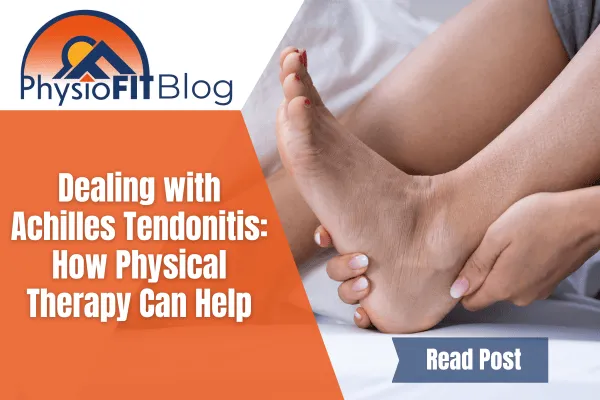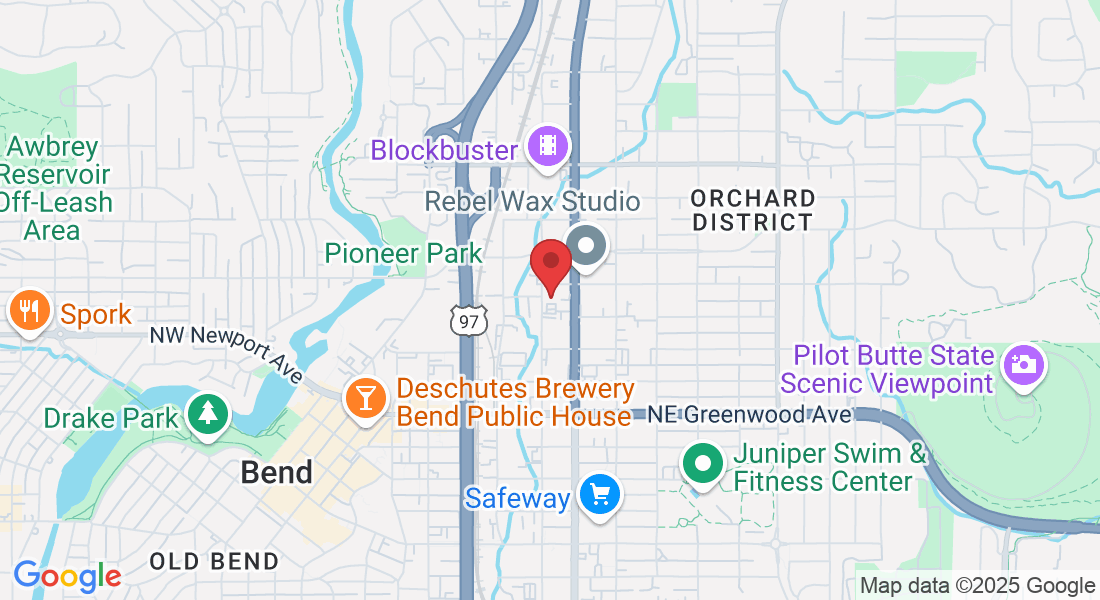Chronic Headache Relief
Free Your Mind From Chronic Headaches
Headaches are an occasional unwelcome guest for many of us, but when they become a frequent visitor, you may be dealing with chronic daily headaches. A broad term that includes various subtypes defined by their frequency and duration. These headaches can be significantly debilitating, but with assertive initial treatment and ongoing management, pain reduction and fewer headaches are achievable. If this strikes a chord with your experience, don't hesitate to schedule an appointment with us.
Discover Unprecedented Relief from Chronic Headaches at PhysioFit: We prioritize personalization in your healthcare journey, acknowledging that individuals with Chronic Headaches necessitate distinct treatment strategies. Utilizing the potency of empirically-supported, fitness-centric physical therapy in bend, we aim to do more than merely alleviate your symptoms. Our mission encompasses the enhancement of your holistic health, prevention of enduring pain, and speeding up your recuperation period, enabling a smooth transition back into your daily routines.
What You Should Know
Migraine headaches can be categorized into two types: episodic and chronic. While chronic migraines happen more than 15 days in a month, episodic ones occur less frequently.
The very medicine you're consuming for headache relief could potentially be causing headaches: Taking pain relievers beyond two days a week, even common ones such as ibuprofen, puts you at risk for what's known as a rebound headache. Similarly, abruptly discontinuing regular pain medication can provoke headaches.
The origin of your headaches may not necessarily be your head: Secondary headaches stem from an underlying health issue, like degenerative disc disease in the spine, sinus infections, or past experiences of head trauma. Although infrequent, persistent headaches and visual disturbances can also be caused by brain tumors.
A proper diagnosis of a TMJ or TMD problem involves a thorough evaluation from a professional.

What Causes Chronic Headaches?
The triggers of numerous chronic daily headaches remain somewhat elusive. Authentic (primary) chronic daily headaches don't present with a detectable root cause.
However, a series of conditions could instigate nonprimary chronic daily headaches, such as:
Vascular Issues: Any inflammation or complications with the blood vessels surrounding or within the brain, including serious events like a stroke, could trigger chronic daily headaches.
Infectious Diseases: Certain infections, notably meningitis, can also result in the manifestation of chronic daily headaches.
Intracranial Pressure Discrepancies: Abnormally high or low pressure within the skull could prompt these types of headaches.
Presence of a Brain Tumor: Brain tumors, whether malignant or benign, could be a potential cause of chronic daily headaches due to the pressure they exert on surrounding brain tissue.
Traumatic Brain Injury: Traumatic events causing injury to the brain can also be a catalyst for chronic daily headaches, as the brain recovers and copes with the trauma.
If any of this information resonates with your current situation, we urge you to schedule an appointment with us immediately. Don't let hip pain diminish your life quality - allow us to help you embark on the path to relief today.
Can Chronic Headaches Be Prevented?
The short answer is yes, chronic headaches can often be prevented, or at least their frequency and intensity can be significantly reduced. The following strategies focus on lifestyle changes and self-care measures which can help you manage and potentially prevent chronic headaches:
Identify Headache Triggers: Proactively documenting each headache in a journal can highlight patterns and triggers, thereby helping you to avoid these. Make sure to record important details like the time the headache started, what you were doing, and how long it lasted.
Cautious Medication Usage: Excessive consumption of headache medications, including over-the-counter ones, can increase the severity and frequency of headaches. It's advisable to consult your doctor for a safe plan to gradually reduce medication use, as abrupt discontinuation can lead to severe side effects.
Quality Sleep: For an average adult, 7-8 hours of sleep a night is essential. Try to maintain a consistent sleep schedule and seek medical advice if you have sleep disturbances, such as snoring.
Regular, Balanced Meals: Aim to eat healthy meals at consistent times daily. Be mindful of potential food and drink triggers like caffeine, and adjust your diet accordingly. Weight loss should be considered if obesity is a concern.
Regular Exercise: Engage in routine aerobic activities to improve your physical and mental well-being and reduce stress. Choose enjoyable activities like walking, swimming, or cycling, and remember to gradually increase the intensity to prevent injury.
Stress Management: Stress can often trigger chronic headaches. Incorporate stress-reducing techniques into your routine such as yoga, tai chi, and meditation. Moreover, staying organized, planning ahead, and maintaining a positive outlook can greatly help in managing stress.
Moderate Caffeine Intake: While caffeine is included in many headache medications due to its pain-alleviating properties, it can also exacerbate headaches. Try to reduce or completely remove caffeine from your diet.

Common Symptoms of Chronic Headaches
Chronic daily headaches, as the name implies, occur more than half the month, lasting for a period exceeding three months. Primary chronic daily headaches are those not precipitated by any underlying health condition.
These headaches can be of shorter or longer duration. Those falling in the long-lasting category persist for over four hours. The types of long-lasting chronic headaches encompass:
Persistent Migraines
Continuous Tension-Type Headache
Newly Appearing Daily Persistent Headache
Hemicrania Continua
Remember, if you resonate with any of the symptoms or conditions mentioned, we highly recommend making an appointment with us for a thorough evaluation and personalized treatment plan.
Please Note: The information provided on our website is intended for general education and is not a substitute for professional medical advice. Each individual's situation and body is different. Therefore, what may work for one person may not work for another. We care about your well-being and advise you to reach out to us to discuss your specific needs before implementing any advice from our website.
Your Source for All Things Physical Therapy in Bend Oregon
The PhysioBlog

Dealing with Achilles Tendonitis: How Physical Therapy Can Help
Understanding Achilles Tendonitis
Please Note: The information provided on our website is intended for general education and is not a substitute for professional medical advice. Each individual's situation and body are different. Therefore, what may work for one person may not work for another. We care about your well-being and advise you to reach out to us to discuss your specific needs before implementing any advice from our website.
Introduction
Achilles Tendonitis, an overuse injury that affects the Achilles tendon, is a common condition among runners and middle-aged people who engage in sports activities like tennis or basketball over the weekends. This band of tissue, which connects the calf muscles at the back of the lower leg to the heel bone, can be significantly impacted by this condition. The role of physical therapy in managing Achilles Tendonitis is crucial, and at PhysioFIT, we emphasize a proactive approach to physical therapy in Bend Oregon. Our focus is on optimizing the body's condition to reduce the risk of injury and enhance the healing process. This article will delve into the causes, symptoms, and preventive measures of Achilles Tendonitis, and how physical therapy can be a game-changer in dealing with this condition. (source: Mayo Clinic)
What is Achilles Tendonitis?
Achilles Tendonitis is caused by repetitive or intense strain on the Achilles tendon. This tendon is used when you walk, run, jump, or push up on your toes. The structure of the Achilles tendon can weaken with age or disuse, making it more susceptible to injury, particularly in people who may participate in sports only on the weekends or who have suddenly increased the intensity of their running programs. Symptoms of Achilles Tendonitis include a mild ache in the back of the leg or above the heel after running or other sports activity. More severe pain may occur after prolonged running, stair climbing, or sprinting. (sources: Healthline, WebMD)
Risk Factors and Prevention of Achilles Tendonitis
Several factors can increase your risk of Achilles Tendonitis, including your sex (it occurs most commonly in men), age (it's more common as you age), physical problems (a naturally flat arch in your foot can put more strain on the Achilles tendon), training choices (running in worn-out shoes can increase your risk), medical conditions (people who have psoriasis or high blood pressure are at higher risk), and certain types of antibiotics. Preventive measures include gradually increasing your activity level, taking it easy, choosing your shoes carefully, stretching daily, strengthening your calf muscles, and cross-training.

Physical Therapy in Bend Oregon at PhysioFIT
At PhysioFIT, we offer a comprehensive range of physical therapy services tailored to the needs of those dealing with Achilles Tendonitis. Our approach is proactive, focusing on injury prevention rather than just treatment. We believe that by optimizing the body's condition, we can help reduce the risk of injury and enhance overall wellness. Our physical therapy services for Achilles Tendonitis include a comprehensive assessment of the individual's physical condition, a personalized training program, and ongoing support and guidance. Our goal is to help individuals achieve their best performance while minimizing their risk of injury. With our proactive approach to physical therapy, we aim to empower individuals to take control of their health and fitness, and to enjoy their activities without the fear of injury.
Physical Therapy for Achilles Tendonitis
Role of Physical Therapy in Managing Achilles Tendonitis
Physical therapy plays a pivotal role in managing Achilles Tendonitis. It aids in restoring mobility that might have been compromised due to the disease, injury, or illness. Physical therapists, or PTs, are licensed professionals who work with individuals that have sustained disabilities, impairments, or limitations in their overall physical function and mobility. These deviations can be the result of disease, injury, or illness. Physical therapists may also work with people to help them prevent injuries.
At PhysioFIT, our physical therapists are well-trained and equipped to provide the necessary care and treatment to help patients regain their independence and normal function. We understand that each patient's condition is unique, and we tailor our treatment plans to meet their specific needs and goals.
Physical Therapy Techniques for Achilles Tendonitis
Approaches to Physical Therapy for Achilles Tendonitis
Achilles Tendonitis can be effectively managed through a variety of physical therapy techniques. These methods aim to aid in the healing process, should only be performed with a physical therapist or trained professional, and can include:
Therapeutic Exercise: As experts in movement, physical therapists primarily use exercise to improve mobility and alleviate discomfort. This involves targeted movements designed to enhance strength and flexibility.
Ultrasound Therapy: This technique involves the use of high or low-frequency sound waves directed towards muscles and surrounding tissues. The sound waves promote relaxation and enhance blood circulation to the injured areas, aiding in recovery.
Electrical Stimulation: This method uses electrical currents to stimulate muscle contractions. These contractions not only strengthen the muscles but also enhance blood flow to the affected area, promoting healing.
Massage Therapy: Also known as soft tissue therapy in physical therapy terms, massage helps to reduce muscle tightness and alleviate pain in the surrounding tendons and ligaments. This aids in achieving pain-free movement.
At PhysioFIT, we employ the necessary techniques and more to assist our patients in recovering from Achilles Tendonitis. Our physical therapists are proficient in applying methods effective in treating the root cause of your problem. Many clinics may apply some of these passive modalities as a piece of their approach to rehab.. Don’t expect to see much of this at PhysioFIT. We want to maximize your time and money by utilizing the most evidence based interventions that will truly get you back to where you want to be. The best medicine, we have found, is movement. This is where we come in. We will help you understand the when, how much and the why of how properly dosed movement is the key.
Physical Therapy at PhysioFIT
At PhysioFIT, we are committed to providing top-notch physical therapy in Bend Oregon for Achilles Tendonitis. Our approach is comprehensive, focusing on both the treatment and prevention of injuries. We understand that Achilles Tendonitis can significantly impact an individual's quality of life, and we are here to help our patients regain their normal function and mobility.
Our physical therapists are highly skilled and experienced in managing Achilles Tendonitis. They work closely with each patient to develop a personalized treatment plan that addresses their specific needs and goals. Our treatment plans incorporate a variety of physical therapy techniques.
At PhysioFIT, we believe in empowering our patients to take an active role in their recovery. We provide them with the necessary tools and knowledge to manage their condition effectively and prevent future injuries.

FAQs
How do you rehabilitate Achilles tendonitis?
Rehabilitation for Achilles tendonitis involves a combination of rest, physical therapy, and sometimes medication. Physical therapy plays a crucial role in rehabilitation in that the key comes down to building back those tissues stronger than before. This doesn't happen by icing, throwing on electrical stimulation or ultrasound. While these modalities may be effective to some extent and more so in pain control. It is important to understand that our body responds to mechanical stress. We focus on appropriately dosing rest and work to build your body back stronger than it was before.
How long do you go to physical therapy for Achilles tendonitis?
The duration of physical therapy for Achilles tendonitis varies depending on the severity of the condition and the individual's response to treatment. It can range from a few weeks to several months.
Can physical therapy help my torn Achilles tendon?
Yes, physical therapy can significantly help in the recovery from a torn Achilles tendon. It can help restore strength and mobility to the affected area, reduce pain, and prevent future injuries. However, the severity of the tear will determine the course of treatment. In some cases, surgery may be required, followed by physical therapy.
Conclusion
Achilles Tendonitis, a common yet debilitating condition, can significantly impact an individual's mobility and quality of life. However, with the right approach and treatment, it is possible to manage this condition effectively and regain optimal functionality.
Physical therapy plays a pivotal role in this recovery process. From understanding the intricacies of Achilles Tendonitis, its causes, symptoms, and risk factors, to implementing preventive measures, physical therapy provides a comprehensive approach to dealing with this condition.
Dealing with Achilles Tendonitis can be a challenging journey. However, with the right guidance, support, and treatment plan, recovery is within reach. Physical therapy, particularly at PhysioFIT, can be your ally in this journey, helping you regain your strength, mobility, and the freedom to move without pain.
Please Note: It's important to note that any exercises that are shared should be performed under the guidance of a qualified physical therapist in bend to ensure correct technique and to prevent injuries. A physical therapist can provide a customized exercise program based on the individual's fitness level, goals, and any existing injuries or conditions. If you’d like to explore this more or would like to schedule a time with a physical therapist, contact us atPhysioFITBend.com
Copyright PhysioFIT 2025 . All rights reserved


